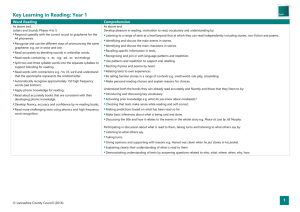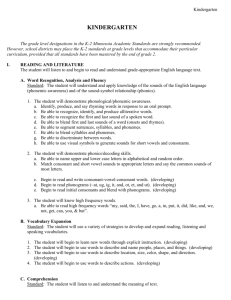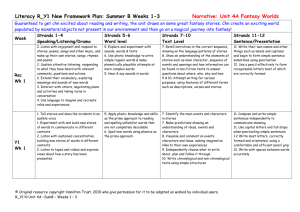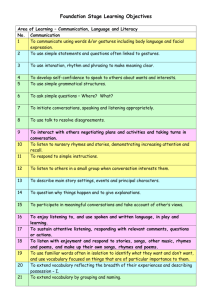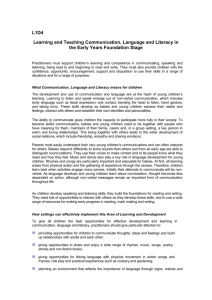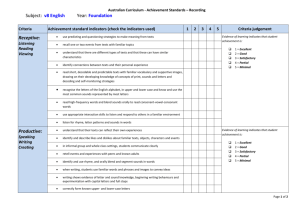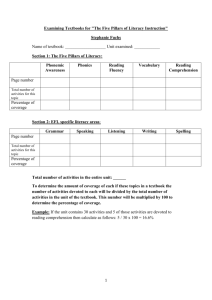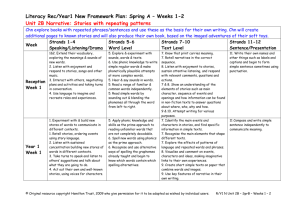Foundation Core Learning in literacy by year
advertisement
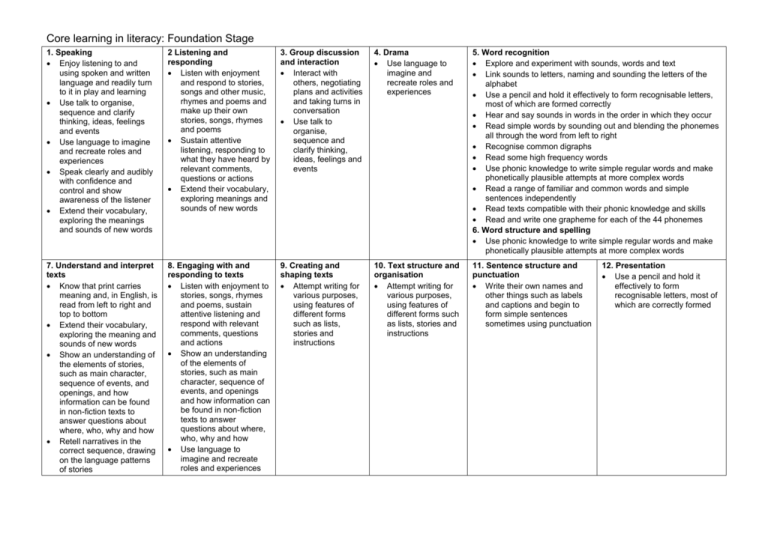
Core learning in literacy: Foundation Stage 1. Speaking Enjoy listening to and using spoken and written language and readily turn to it in play and learning Use talk to organise, sequence and clarify thinking, ideas, feelings and events Use language to imagine and recreate roles and experiences Speak clearly and audibly with confidence and control and show awareness of the listener Extend their vocabulary, exploring the meanings and sounds of new words 2 Listening and responding Listen with enjoyment and respond to stories, songs and other music, rhymes and poems and make up their own stories, songs, rhymes and poems Sustain attentive listening, responding to what they have heard by relevant comments, questions or actions Extend their vocabulary, exploring meanings and sounds of new words 3. Group discussion and interaction Interact with others, negotiating plans and activities and taking turns in conversation Use talk to organise, sequence and clarify thinking, ideas, feelings and events 4. Drama Use language to imagine and recreate roles and experiences 5. Word recognition Explore and experiment with sounds, words and text Link sounds to letters, naming and sounding the letters of the alphabet Use a pencil and hold it effectively to form recognisable letters, most of which are formed correctly Hear and say sounds in words in the order in which they occur Read simple words by sounding out and blending the phonemes all through the word from left to right Recognise common digraphs Read some high frequency words Use phonic knowledge to write simple regular words and make phonetically plausible attempts at more complex words Read a range of familiar and common words and simple sentences independently Read texts compatible with their phonic knowledge and skills Read and write one grapheme for each of the 44 phonemes 6. Word structure and spelling Use phonic knowledge to write simple regular words and make phonetically plausible attempts at more complex words 7. Understand and interpret texts Know that print carries meaning and, in English, is read from left to right and top to bottom Extend their vocabulary, exploring the meaning and sounds of new words Show an understanding of the elements of stories, such as main character, sequence of events, and openings, and how information can be found in non-fiction texts to answer questions about where, who, why and how Retell narratives in the correct sequence, drawing on the language patterns of stories 8. Engaging with and responding to texts Listen with enjoyment to stories, songs, rhymes and poems, sustain attentive listening and respond with relevant comments, questions and actions Show an understanding of the elements of stories, such as main character, sequence of events, and openings and how information can be found in non-fiction texts to answer questions about where, who, why and how Use language to imagine and recreate roles and experiences 9. Creating and shaping texts Attempt writing for various purposes, using features of different forms such as lists, stories and instructions 10. Text structure and organisation Attempt writing for various purposes, using features of different forms such as lists, stories and instructions 11. Sentence structure and punctuation Write their own names and other things such as labels and captions and begin to form simple sentences sometimes using punctuation 12. Presentation Use a pencil and hold it effectively to form recognisable letters, most of which are correctly formed

